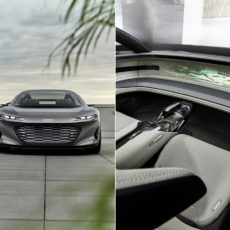
Otto Aviation’s Phantom 3500 isn’t just a regular private jet—it’s a new way to think about flying. Introduced as a big step for eco-friendly flights, this stylish jet aims to beat even the fanciest planes, like Elon Musk’s Gulfstream G650ER, by being more efficient, cheaper, and better for the environment. Let’s look at what makes the Phantom 3500 special, from its technology to how it could change private flying.
The Phantom 3500 looks like something from a sci-fi movie designed by a scientist. Its most eye-catching part? A windowless fuselage. Otto Aviation skipped regular round windows to create a smooth airflow design that reduces air resistance. This isn’t just for looks—it lowers drag, letting the jet fly at 530 mph while using much less fuel than other jets.
- Lightweight and Regulation Friendly - At just 135g, DJI Neo may be even lighter than your phone and does not require FAA registration and Remote ID....
- Palm Takeoff & Landing, Go Controller-Free [1] - Neo takes off from your hand with just a push of a button. Neo's safe and easy operation makes it...
- Subject Tracking & QuickShots - Effortlessly capture stunning vlogs as DJI Neo smartly follows you. Getting professional footage has never been easier...

The jet’s body is a brand-new design, made to focus on aerodynamics. It’s 43 feet long with a 34-foot wingspan, small for a business jet, and fits up to six passengers in a cozy cabin. The outside is made of lightweight materials, keeping the jet’s weight low to save even more fuel. Otto says the Phantom 3500 uses 10 times less fuel than typical business jets, which is a big deal since fuel costs are a huge challenge in private flying.

Don’t expect a flying penthouse. The Phantom 3500’s cabin is functional, not flashy, with a focus on comfort for short to mid-range trips. The windowless design is offset by high-resolution digital displays that can mimic external views or stream data, though it’s unclear how immersive these are in practice. The interior offers plush leather seats, a compact galley, and a lavatory, but at 4.5 feet high and 5 feet wide, it’s snug compared to the G650ER’s palatial cabin. Still, for a jet priced around $8–10 million (estimated, as Otto hasn’t confirmed), it’s a trade-off many buyers might accept.

Under the hood—or rather, at the rear—the Phantom 3500 is powered by twin Pratt & Whitney Canada PW535E1 turbofan engines. These aren’t the beefiest engines in the sky, but they don’t need to be. The jet’s low-drag design lets it hit a maximum speed of Mach 0.78 (about 600 mph) and a range of 2,500 nautical miles, enough to zip from New York to Los Angeles or London to Dubai without a refuel. Its ceiling of 45,000 feet puts it above most commercial air traffic, offering smoother rides and faster routes.

As the aviation industry faces growing pressure to decarbonize, true transformation requires rethinking the aircraft itself, beyond fuel alternatives. I’m honored to join industry peers at Sustainable Skies 2025 to share how Otto is pushing the boundaries of what sustainable flight can be,” said Paul Touw, Otto Aviation CEO.
[Source]










